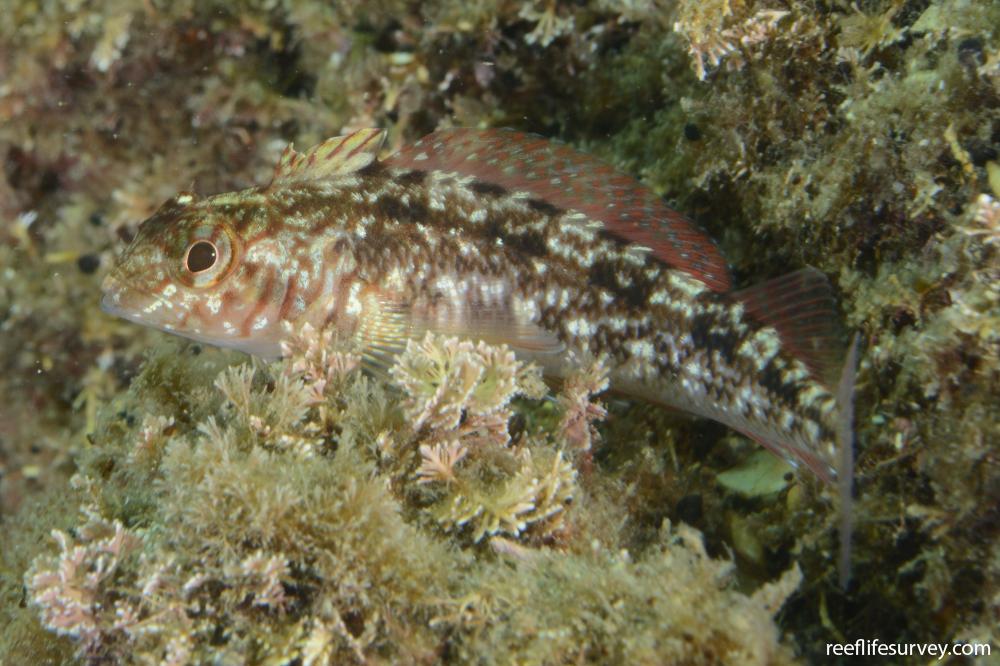Forsterygion varium
Many-rayed threefin | Variable Threefin | Variable TriplefinSimilar Species
Same Genus
Distribution
Temperate Australasia
Description
Large triplefin with mottled brown, green and pink body and a first dorsal fin with six to seven spines in contrast to the three of most other local species in the family. Males are brighter than females and have bluish tips to the fins. Spawning males are black but may retain the bluish tips to the fins. F varium has a more yellowish eye compared to the similar F lapillum. The latter normally has a distinctive black stripe, but spawning males also turn black, becoming hard to distinguish from F varium spawning males. F varium has been introduced to Tasmania from New Zealand. Another introduced, but uncommon triplefin, the estuarine threefin Grahamina gymnota, is also found on the same reefs in the Derwent Estuary. That species differs from the many-rayed threefin in having a more bulbous head and the first spine in the first dorsal fin longer than the next few spines, rather than shorter.
Information
Max Size: 13 cm
Sea Temperature Range: 10.2-21.5°C
Depth: 0-10 m
Habitat Generalization Index: 32.91
Also referred to as the SGI (Species Generalisation Index), this describes the habitat niche breadth of the species. Species with values less than 15 are found in a relatively narrow range of reef habitat types (specialists), while those over 25 may be found on most hard substrates within their range (generalists). Learn more here.
Conservation and Rarity
IUCN Status: Not Evaluated
Occurrence: Common (29.9% of sites)
Occurrence describes how often the species is found on surveys within its distribution. It is calculated as the % of reef sites surveyed by RLS divers across all the ecoregions in which the species has been observed
Abundance: Several (8 per transect)
Abundance is calculated as the average number of individuals recorded per RLS transect, where present.
Edit by: Andrew Green



















